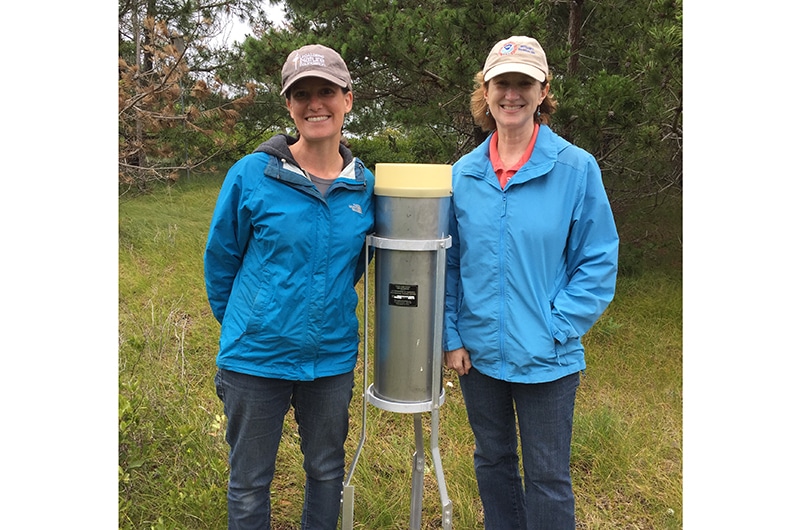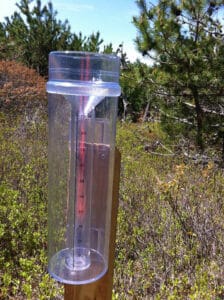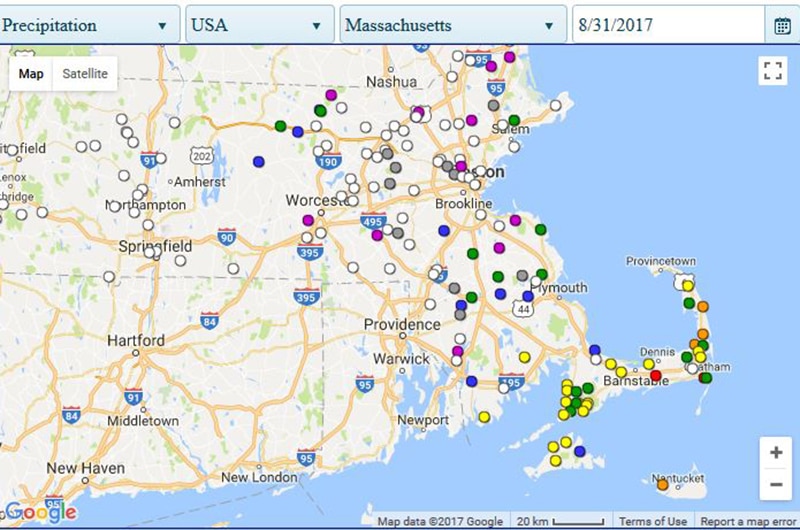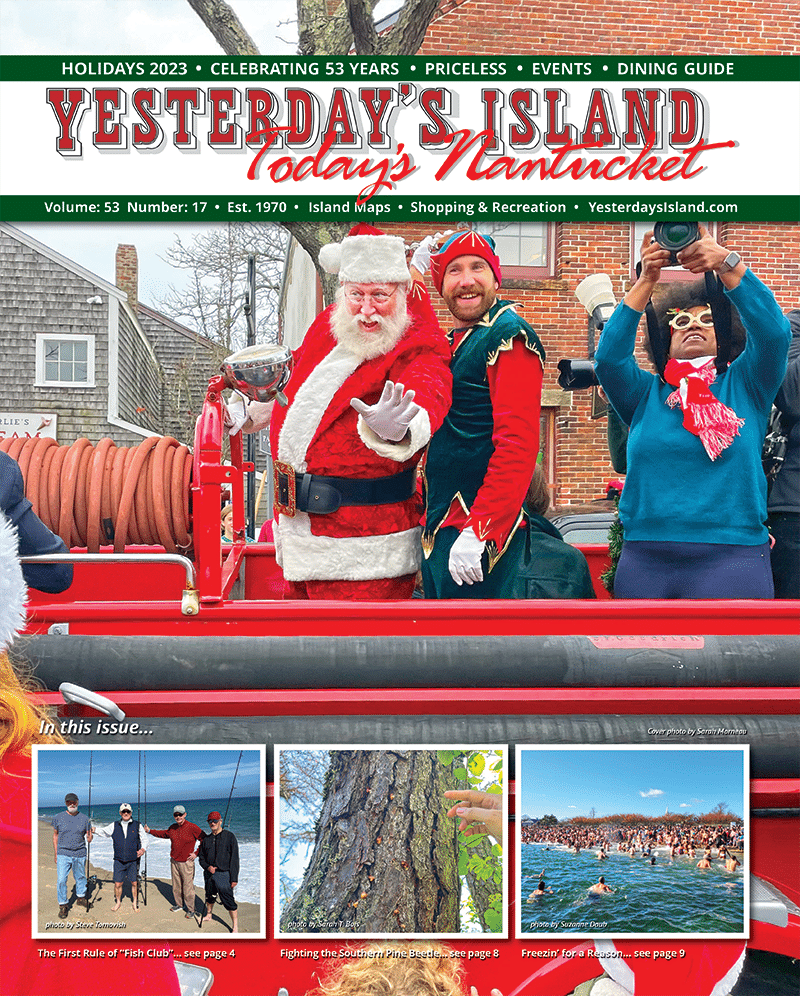by Sarah Treanor Bois, Director of Research & Education for the Linda Loring Nature Foundation

To help us understand precipitation patterns on Nantucket and how they fit into the bigger regional and national pictures, the Linda Loring Nature Foundation (LLNF) has become a precipitation center for the island, monitoring multiple aspects of our precipitation with four different and complementary projects. Since 2014, we’ve been taking daily precipitation measurements as part of the Collaborative Rain, Hail, and Snow Network (CoCoRaHS). This national citizen science network was started by the Colorado Climate Center at Colorado State University in 1998. The strength of this data set lies with hundreds of monitors collecting data with the same exact rain gauge using the same set of standard protocols in all 50 states. The data collected is then publically available for anyone to use via their interactive website. Aside from curious citizens, the data are used by the National Weather Service, other meteorologists, hydrologists, emergency managers, insurance adjusters, and the USDA, among others. In 2016, data from the CoCoRaHS program helped illustrate that Nantucket was the only part of Massachusetts that was not under severe drought conditions with our island receiving more rain in July and August than the rest of the Commonwealth. The program has become so popular since its inception that President Obama established a gauge in the Rose Garden at the White House in 2015 as part of an effort to highlight citizen science. National Park Staff now collect the data daily which can be seen on the CoCoRaHS website.
As part of the educational mission of LLNF, we also helped establish a CoCoRaHS station at the Nantucket New School in 2015, where the students have incorporated their daily measurements into lessons on climate, weather, and science. The 2nd and 4th graders produced a short video in 2016 that was recognized by the national headquarters. Continuing with the LLNF mission, the Saltmarsh Senior Center is also planning to install a CoCoRaHS rain gauge. More rain gauges across the island mean that we can get a more accurate picture of precipitation patterns. Many of us have had the experience of talking to someone in Madaket where it’s raining and being in town where the streets are still dry. The more rain stations, the better! With the CoCoRaHS program, anyone can establish a gauge that wants to and the gauges only cost around $30. Their website is also full of educational materials for all ages.

The COOP program is the nation’s largest and oldest weather network. It was established in 1891 to formalize the collection of meteorological observations and record climate conditions in the United States based on the ideas of Thomas Jefferson. Because the network’s observers have generated consistent long-term historical climate data, the network has established an instrumental record of climate. Climatic atlases for the country are based on decades of observations from COOP observers. These data are invaluable in learning more about the floods, droughts, heat and cold waves affecting us all. COOP data plays a critical role in efforts to recognize and evaluate the extent of human impacts on climate from local to global scales. The LLNF COOP site will add to this historic data set and help create more accurate weather predictions for the island.
In addition to how much water falls and when, the LLNF is also helping monitor what’s IN our precipitation. In 2014, the Nantucket Land Council partnered with the National Atmospheric Deposition Program (NADP) to establish an NADP station on the LLNF property. This station is powered by a solar panel and collects rain water into a collecting bucket every time it rains. Once a week, Emily Molden from the Nantucket Land Council collects the bucket and mails the sample of precipitate to the NADP lab. Samples are analyzed at the program’s Central Analytical Laboratory in Champaign, Illinois, to determine the amounts of certain chemicals, including NO3- and NH4+.

Recently, the Linda Loring Nature Foundation was asked to participate in another precipitation collection research project with the University of Massachusetts at Amherst. With this project, researchers are asking some CoCo- RaHS volunteers to save the rain in the gauge and send it to their lab in Amherst. This project started at LLNF on September 1 and is expected to go through at least one year.
The Linda Loring Nature Foundation continues to collect valuable precipitation data both to contribute to the national data sets, but also to provide educational opportunities for Nantucket’s school children and visitors. We’re also happy to help others who’d like to establish a CoCoRaHS rain gauge for themselves.
To learn more about these programs and view the data for yourself, check out www.cocorahs.org and nadp.sws.uiuc.edu.



